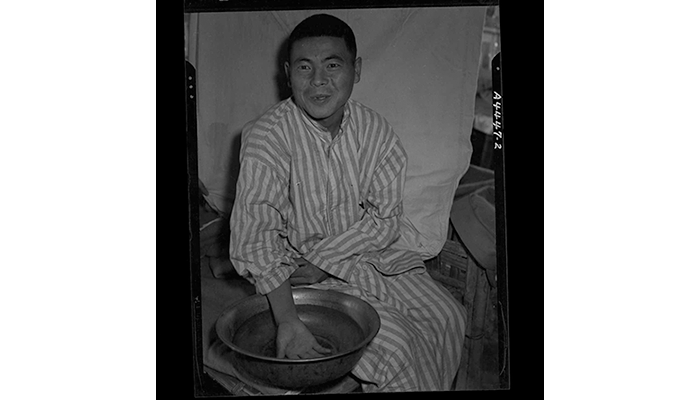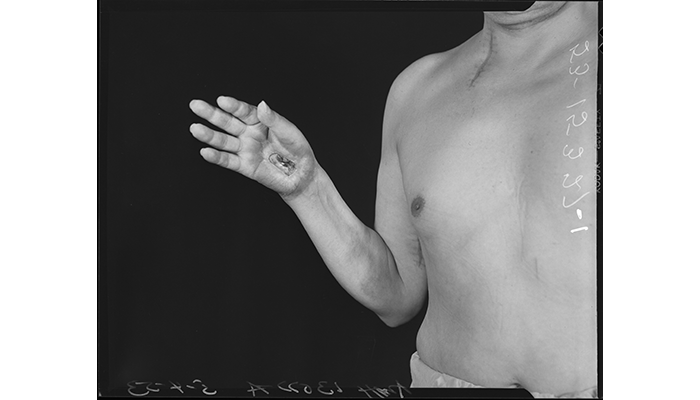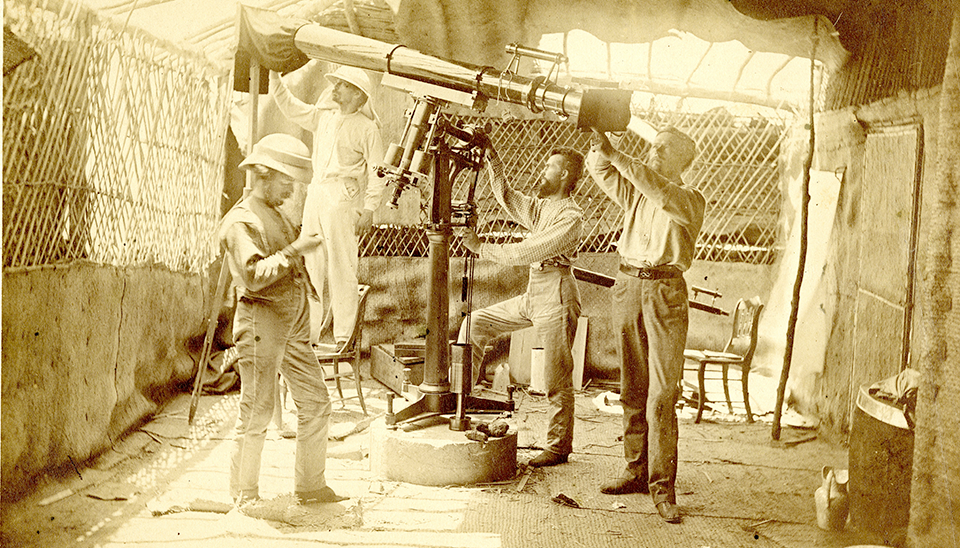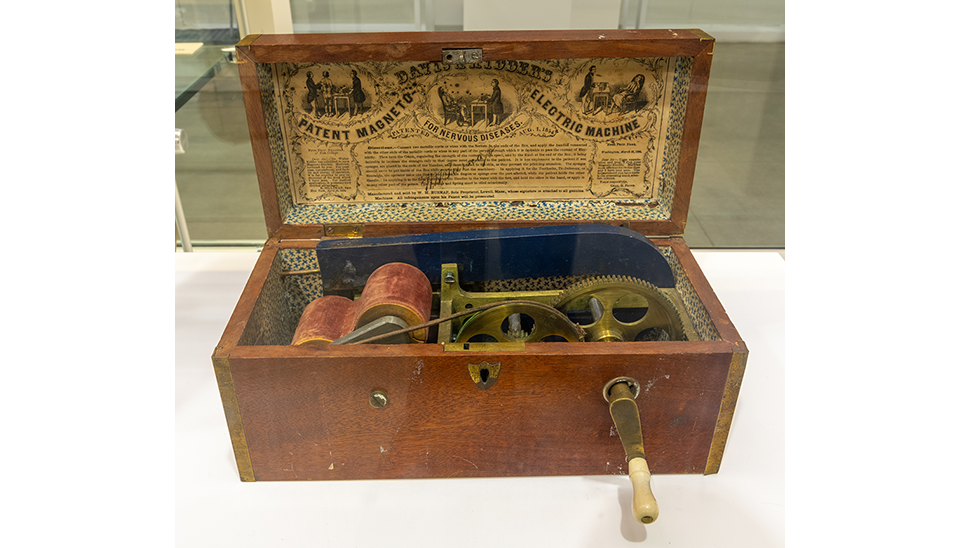In 1872, physician Silas Weir Mitchell wrote, "Perhaps few persons who are not physicians can realize the influence which long-continued and unendurable pain may have upon both body and mind. […] Perhaps nothing can better illustrate the extent to which these statements may be true than the cases of burning pain, or as I prefer to term it, causalgia, the most terrible of all the tortures which a nerve wound may inflict" (Mitchell [1872] 1965:196).
Causalgia, from the Greek kausos (heat) and algos (pain), was named by Mitchell in 1867, but it was first clinically described by acting assistant surgeons Mitchell, George R. Morehouse, and William W. Keen in their October 1864 publication Gunshot Wounds and Other Injuries of the Nerves. The three physicians were stationed at Turner's Lane Hospital in Philadelphia during the Civil War and conducted their groundbreaking research on incoming patients with wounds and injuries of the nerves, primarily from the Battle of Gettysburg in July 1863. Addressing the condition for the first time, the authors wrote, "It is a form of suffering as yet undescribed, and so frequent and terrible as to demand from us the fullest description. In our early experience of nerve wounds, we met with a small number of men who were suffering from a pain which they described as a 'burning,' or as 'mustard red hot,' or as 'a red-hot file rasping the skin'" (Mitchell et al. [1864] 1989:101).

A patient exhibits nerve paralyses and causalgia after sustaining a gunshot wound to the left shoulder five weeks prior. Diagnosis is flaccid paralysis of the flexor carpi ulnaris muscle due to nerve lesions. Patient has a water-soaked dressing applied to the left hand. Circa 1950s. (MIS 54-206-3)
The burning pain was distal to the site of injury, usually in the palm of the hand or top of the foot, and was often observed in association with areas of glossy red or mottled skin. This association was attributed to nerve damage that resulted in changes to circulation and skin nutrition and altered the normal state of the nerves affecting the skin (Mitchell et al. [1864] 1989; Mitchell 1867). Additional symptoms included a hypersensitivity to air, touch, or temperature changes.

A patient at the 20th General Hospital experiences severe causalgia of the right hand due to a gunshot wound. He experienced pain relief following immersion in cold water. February 12, 1944. (A44-47-2)
A number of treatments were attempted to alleviate symptoms, including hypodermic injections of morphine into the tissues of the affected part. The one remedy that proved to be most successful in comforting the causalgia patient was the application of water-soaked dressings to the area of burning pain (Mitchell [1872] 1865).

A patient exhibits a trophic ulcer of the palm of hand. He experienced Sudeck's atrophy/causalgia in the right upper extremity for eight months. April 1953. (MIS 53-15327-1)
The term "causalgia" was used with frequency through World War II and is still applicable today, but the condition is more often referred to as Complex Regional Pain Syndrome (CRPS) Type II. Causalgia is sometimes used interchangeably with Sudeck's atrophy, as displayed in the captions of historic photographs from the Otis Historical Archives at the National Museum of Health and Medicine. Today, Sudeck's atrophy is classified as Complex Regional Pain Syndrome Type I. The clinical diagnosis of CRPS Type I or Type II can depend on whether or not evidence of nerve damage has been identified in the affected limb, but the symptoms often remain the same.
Resources
Mitchell, Silas Weir. "On the Diseases of Nerves, Resulting From Injuries," in Flint, A. (ed.): Contributions Relating to the Causation and Prevention of Disease, and to Camp Diseases, US Sanitary Commission Memoirs, New York, 1867.
Mitchell, Silas Weir, George Read Morehouse, and William Williams Keen. Gunshot Wounds and Other Injuries of the Nerves. Philadelphia: J.B. Lippincott, 1864. Reprinted. San Francisco: Norman Publishing, 1989.
Mitchell, Silas Weir. Injuries of the Nerves and Their Consequences. Philadelphia: J.B. Lippincott, 1872. Reprinted as Volume II in the American Academy of Neurology Reprint Series. New York: Dover Publications, Inc., 1965.
Richards, R. L. "Causalgia: A Centennial Review." Arch Neurol 16 (April 1967): 339-350.
Relevant Links:
National Institute of Neurological Disorders and Stroke: Complex Regional Pain Syndrome Information Page
https://www.ninds.nih.gov/Disorders/All-Disorders/Complex-Regional-Pain-Syndrome-Information-Page
Complex Regional Pain Syndrome (CRPS) Type I: Historical Perspective and Critical Issues
https://www.ncbi.nlm.nih.gov/pmc/articles/PMC4832406/




